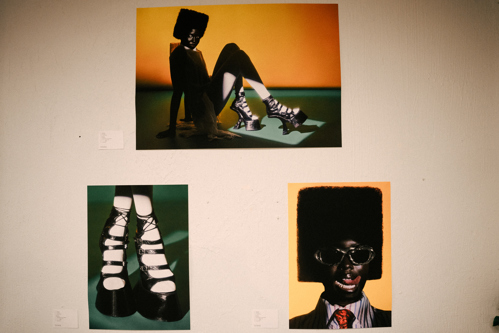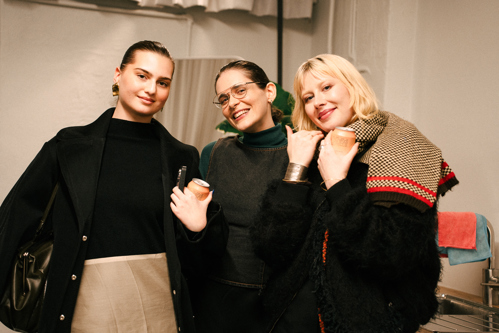For many creatives, the word “study” can feel at odds with “practice.”
Time spent in theory, in lectures, in front of a screen instead of behind a camera, in a studio, or immersed in making — can feel like a detour from the real work. But for JMC Academy Master of Creative Industries student Macami, that idea has been turned on its head.
Her one-night event Interlude: Reimagining Fashion Campaigns, held last week at OUT OF OFFICE, wasn’t just a showcase of her Master’s project — it’s proof that postgraduate study can be an engine for artistic momentum, not a pause.
“I’ve been feeling really grateful. I never imagined that working on my Master’s thesis/project would be this fulfilling,” Macami reflects in a recent Instagram post. “I haven’t been shooting many creative projects, something I always believed was the fuel that kept me going. And in many ways, it still is. But realising that creativity doesn’t have to come in bursts, that it can be steady and expansive, has been incredibly freeing.”
That “expansiveness” is exactly what the Master of Creative Industries at JMC is designed to nurture. Tailored for working creatives, musicians, designers, filmmakers, animators, game makers, producers and more — the course allows students to anchor their academic inquiry in a real-world project. For Macami this took shape, in part as, Interlude, an exploration of how fashion campaigns in Australia could be more emotionally engaging, visually imaginative, and commercially relevant all at once.

Interlude included a panel talk with local industry leaders Bruna Volpi, Jake Terrey, Jasmine Christie, and Sean Brady, a curated exhibition of photographs from Macami’s Masters project, and time for community connection — positioning Macami not just as a JMC student, but as a creative director, cultural thinker, and connector.
Rather than stepping away from her creative practice to “study,” Macami’s been stepping deeper into it.
JMC’s Master of Creative Industries course structure supports this kind of integration. With a major emphasis on individual research projects, students are encouraged to use the course as a platform — not a pit stop. It’s built for those who want to challenge the status quo of their field, while still developing the discipline, networks, and intellectual frameworks to thrive within it.

Macami’s project sits at that intersection: storytelling and strategy, creativity and commerce, emotion and execution. And crucially, it’s not happening after-hours or off the side of her desk. It is the work.
In a creative economy that moves fast and demands more, the Master of Creative Industries offers something rare: the chance to breathe, to reflect, to deepen. To create not just more — but with more meaning. And that’s something worth sharing.


